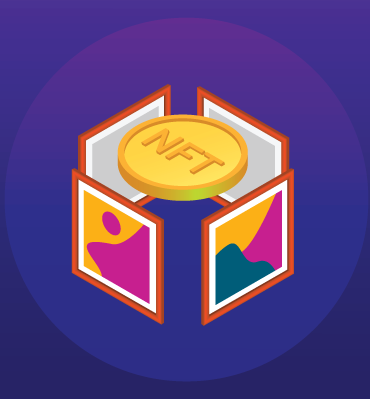NFTs: Where Art Meets Blockchain
NFTs: Where Art Meets Blockchain
By now you may have heard about the $69 million JPG sold at auction. Back in March, an image from the artist Beeple became the most expensive piece of digital art ever sold. Here’s the image:
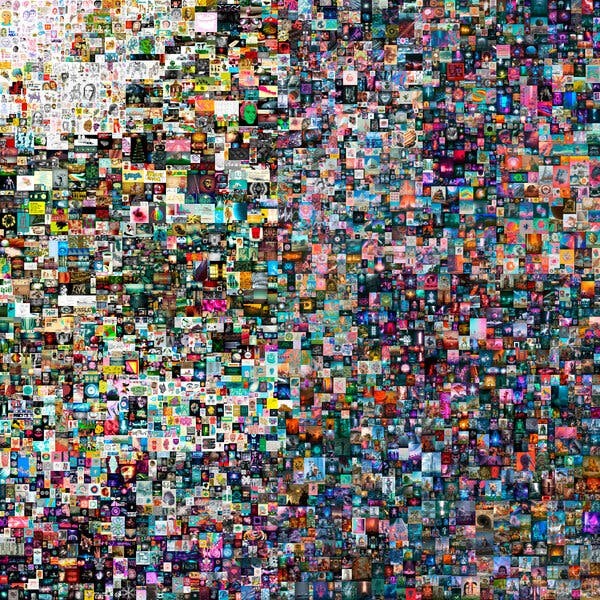
You may rightly wonder why someone would spend so much money to “own” something that physically doesn’t exist and that anyone can share online? Well, I can’t answer that question, but I am curious about this new digital art platform, where anything from original illustrations, to memes, to video clips are traded using cryptocurrency. I decided to find out.
What exactly is an NFT?
NFT stands for “Non-Fungible Token.” Non-fungible means that it’s unique, and token is a blockchain certificicate of ownership that you can digitally transfer to another person. This makes the digital asset one-of-a-kind. And like a Picasso painting, a Hank Aaron rookie card, or Dorothy’s ruby slippers, when something is rare it has the potential to be valuable.
As with all things Internet, Cats Made NFTs possible
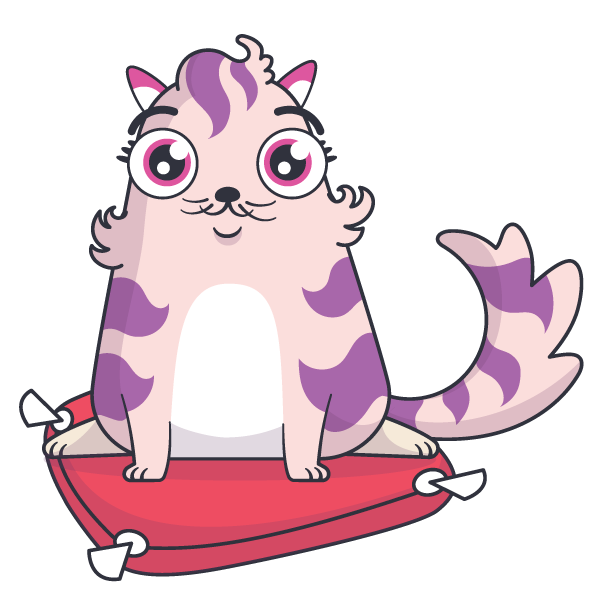
Cats: they will evetually rule us all.
How did the technology for creating NFTs come about? It’s all thanks to a game created by Dapper Labs on the Ethereum blockchain called CryptoKitties. The game allows players to “purchase, collect, breed and sell virtual cats.” Each CryptoKitty is created as an NFT, whose ownership is then tracked via a smart contract.
The digital asset for the Kitty is just a file, like a JPG or GIF. What Ethereum popularized was how to authenticate and preserve ownership of an external asset via blockchain.
Today, Ethereum is the lynchpin for trading most NFTs. Through my research into actually trying to sell one, it became clear that my first step was to get an Ethereum account and purchase some ether – Ethereum’s cryptocurrency. However, with the popularity of NFTs, other blockchain companies are jumping in.
Cool, cool, cool. So, is trading NFTs legit?
I have a working-person’s knowledge of blockchain, cryptocurrencies, bitcoin, etc., but I hadn’t put any digital skin into the game until now. Creating and selling an NFT may sound like a nifty trick that could make me a little (or a lot of) money. However, there are several ethical concerns I needed to confront in the process:
- The amount of computing power to make and sustain cryptocurrencies that are the basis for trading NFTs. Cryptocurrency “mining” is a very power-intensive process. According to a 2018 testimony by an associate professor at Princeton University, bitcoin mining represents about 1% of the world’s energy use. And where does most of that energy come from? You guessed it – fossil fuels.
- The Mos Eisley Cantina reputation of the crypto marketplace. It may not be a wretched hive of scum and villainy, but the unregulated nature of cryptocurrencies make it a volatile place to hang out.
- Am I contributing to a speculator’s market where NFTs are essentially digital Beanie Babies? Or is this somehow a pyramid scheme or a big scam to dupe artists into buying Ethereum?
- Who is behind these blockchain companies? In the case of Ethereum, it’s Russian-Canadian programmer Vitalik Buterin, who is now the world’s youngest crypto billionaire. Do I really want to make an obscenely rich dude even richer?
I’ve always side-eyed the crypto market, assuming it to be essentially a gray market where illicit transactions evade the scrutiny of established currencies and governments. I am still not wholly disabused of that notion after my research. However, I decided to forge ahead to see how my toe-dip into the world of NFT’s would pan out.
How I created and Auctioned My NFT
After reading a few blogs and watching a few videos on the topic, I felt prepared to create my own NFT and sell it in the crypto-marketplace.
1. Create the Art
The first thing I realized was that the art itself was almost immaterial to this process. I could auction pretty much anything – a doodle, a photo from my phone, a sound file. I am a designer after all, so I wanted to put something out there that I felt good about. What better way to launch my NFT debut than with a cat picture! I present to you, Galaxy Flurf:
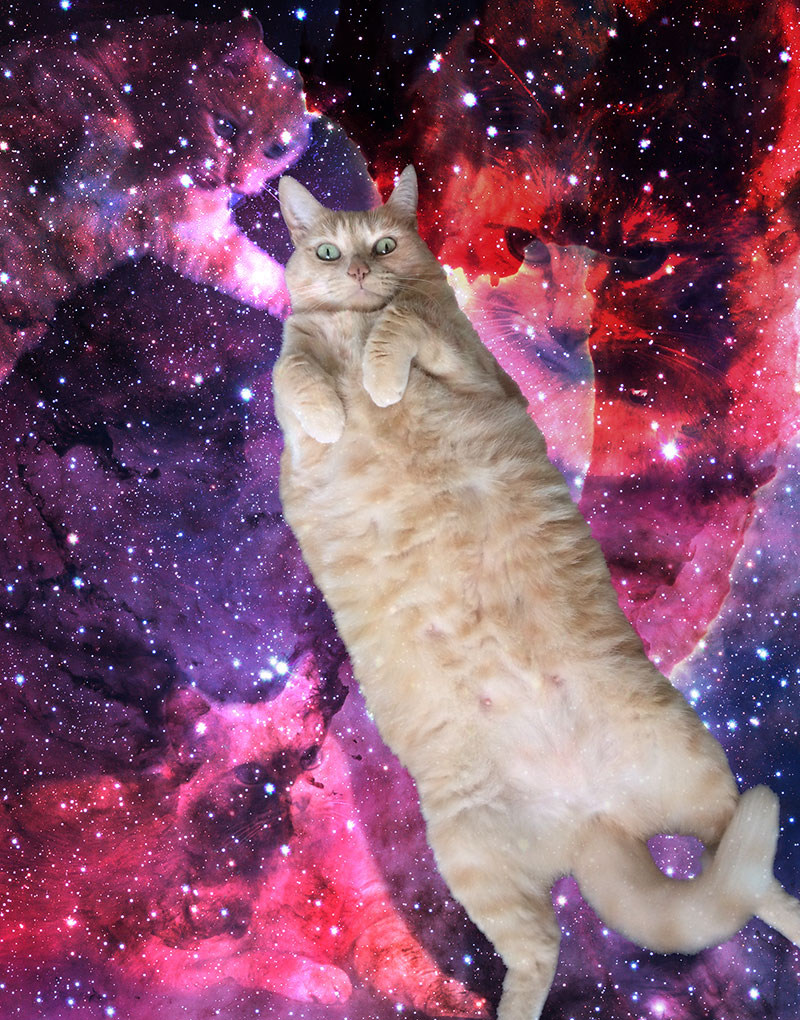
2. Set up a Digital Wallet
If you want to do anything with cryptocurrencies, you need a place to store them. A digital “wallet” is a platform that stores the public and private keys required to buy cryptocurrencies. There are a bunch of digital wallet products out there. I went with the one I had heard of before, Coinbase. The first step was easy – I created my Coinbase account with a few clicks. The next step was scary – connecting my bank account to my Coinbase account. I know millions of people have already done this, but connecting my real-world, real-money bank account felt risky. They wouldn’t accept linking to a credit card, where you have more protection against fraud. I also couldn’t use a prepaid debit as they needed to verify my address. I landed on linking to my Paypal account, as that felt like there was one more layer between me and the digital Wild West.
3. Buy some Ethereum cryptocurrency
It costs money to create an NFT. Similar to mining bitcoin, converting your art into an NFT takes computer processing power. That plus other fees for the bids and transfers could end up costing you a pretty penny. Also, because the exchange rate of cryptocurrencies fluctuate wildly, it’s hard to gauge how much cash you need to throw into your digital wallet to cover all of the fees. I purchased $150 of Ethereum to get me started. At the time, the cryptocurreny was back on a climb after a drop from the day before, so I think I got a decent exchange. My $150 secured me 0.05403155 of an Ethereum coin.
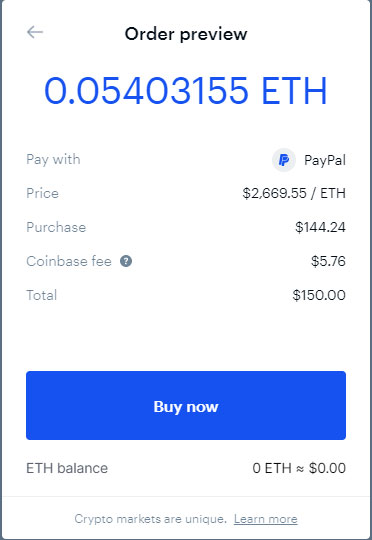
4. Connect new crypto wallet to an NFT marketplace
There were around a dozen NFT marketplaces I checked out. Some are more high-end and invite only, so buyers have a more curated experience (and you can probably sell NFTs for more money). Others are open to all. The two open marketplaces I kept coming across were OpenSea and Rarible. I liked some of the features on Rarible – namely that I can customize a royalty percentage on resales – and it seemed easier to use.
As soon as I started going down that road I immediately discovered that I needed to do more setup. I did NOT set up a wallet like I thought I had in Step 2. I set up my Coinbase account, but I still needed a wallet, which I guess is a different thing? Anyway, I downloaded the Coinbase app and the Coinbase Wallet app and connected the two to my Coinbase account. Now I just need to connect my wallet to Rarible.
Nope, not yet. Did I create my “recovery phrase” for my wallet? I was prompted for a recovery phrase, but I hadn’t set one. So back I went into the Wallet app to try and figure out how to do this? OK, the app generates a set of 12 random words as my recovery phase, that I am encouraged to manually back up. After writing the phrase down on a post-it I could now connect my wallet.
Wait, what now? Oh, just taking a photo of my driver’s license and uploading it to confirm my identity. This was getting really invasive. I guess I should worry less about mafiosos laundering money since you practically have to get a cheek swab just to open an account on these platforms. Rudy was dubious, but I’d come this far and millions of other people have gone through this process, so what the heck?
After finally connecting my Coinbase Wallet to my Coinbase account, I had to fill my empty wallet to actually pay for anything. Moving money to my wallet incurs an additional fee. With my wallet stuffed with crypto-cash, I connected my wallet to Rarible and created an account.
5. List the art and turn it into an NFT
After setting my account preferences in Rarible I was finally ready to "mint" my image as an NFT. I had read that you can really get hit with high fees depending on when you mint your NFT, so I checked Rarible Analytics to check the “gas price” for minting.
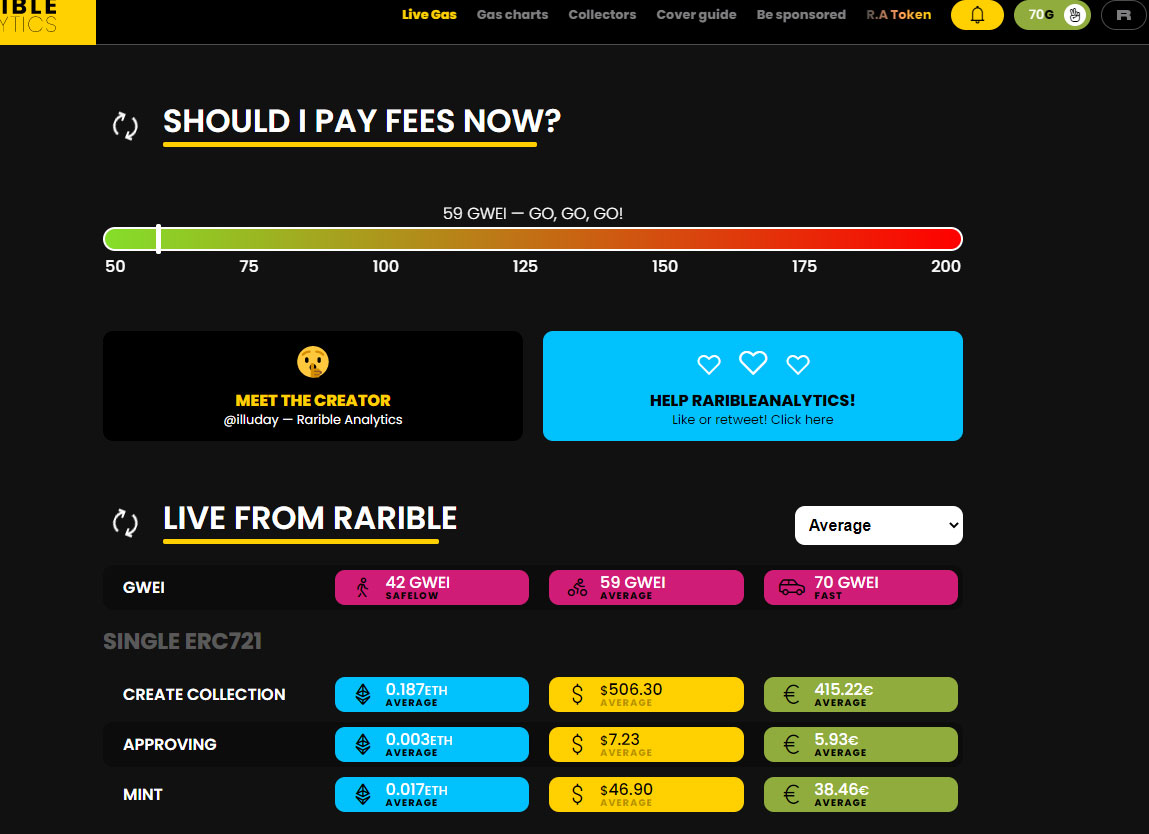
In the few minutes I spent getting my act together, the “gas fee” jumped between 50 and 70 GWEI, which meant the difference between it costing $46 and $55 to mint my NFT. It literally changed every 10 seconds, but I couldn't worry about that now. I was so close to the end.
Now I just needed to upload the art, set all of my parameters, and let ‘er rip! I decided to do a single release (meaning there’s only one copy) and a 1-day timed auction to see how this first experiment turned out. I was able to set a minimum bid of 0.01 ETH (about $27), my royalties percentage (20%), a title and a description. I checked the “gas price” again. I hovered over my NFT's “Create Item” button until it was under 60 GWEI.
I clicked the button and went back to the wallet app to confirm the minting. I was informed that gas prices were high due to congestion. Oh well, we’ll see how much this costs in the end! I waited. It takes about 15 minutes to mint an NFT.
Success! My Galaxy Flurf NFT was up for auction.

Final Tally on Cost
Fees are levied at every step of this process – from getting a crypto account, to setting up a wallet, to creating the NFT. On top of that, the base currency is Ethereum, whose exchange value against the dollar changes every 10 seconds. Still, here’s an approximate breakdown of how much it cost to put Galaxy Flurf up for auction:
- $5.76 Coinbase fee to create account and deposit $150
- $3.41 “miner fee” to move $100 from Coinbase account to Coinbase wallet
- $41.21 to mint my image as an NFT
- $6.11 “miner fee” to create the NFT
- Total: $56.49, of which $15.28 were fees
My NFT didn't sell at auction, so I don’t have a final tally on commissions or other point of sale fees. Rarible charges 2.5% of the sale price to the buyer and seller each. Then I'd have to move my earnings from my wallet back to my account (fee) and cash out from my Coinbase account to Paypal (another fee). To “break even” on my investment, I’d need to sell Galaxy Flurf for around $70.
Somebody’s making money at this game, and so far, it sure isn’t me!
None of this exists in the real world, nor does that matter
When I started out as a graphic designer the Internet was brand new. When I got into web design, I’d often joke that I spent all day creating things that ultimately did not exist. Every website, every HTML email, every infographic, every icon I’ve designed is a ghost in the machine. And yet, I’ve built the last 25 years of my career on it. The digital world is only increasing in relevance, and is now outpacing what you can achieve in reality.
NFTs are just the latest expansion of our digital universe. As a creator, I see it in the same vein as selling any other type of art, be it a painting, photograph, sculpture, etc. What people are willing to invest in art is entirely subjective. Sure, the more connected or famous you are, the easier it will be to earn money from NFTs, but those parameters have shaped the art world for its entire history.
What separates NFTs from a stock image or something on Giffy is the certificate of authenticity created by the smart contract on its blockchain. That's what makes Galaxy Flurf or any other NFT unique. And when something is unique, it has the potential to be valuable.


